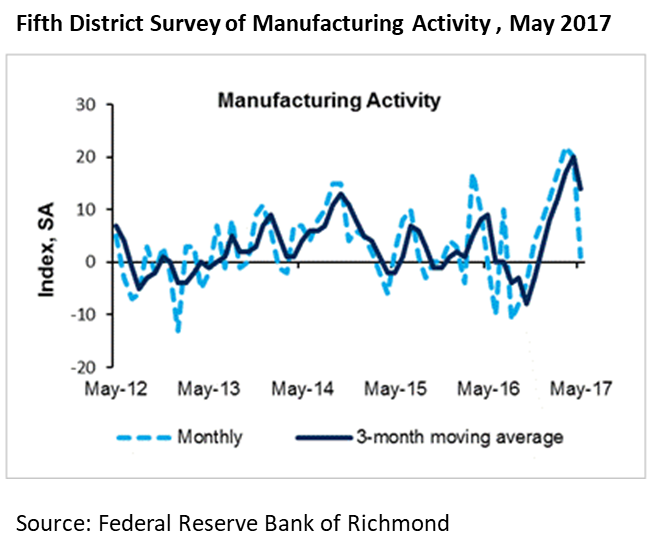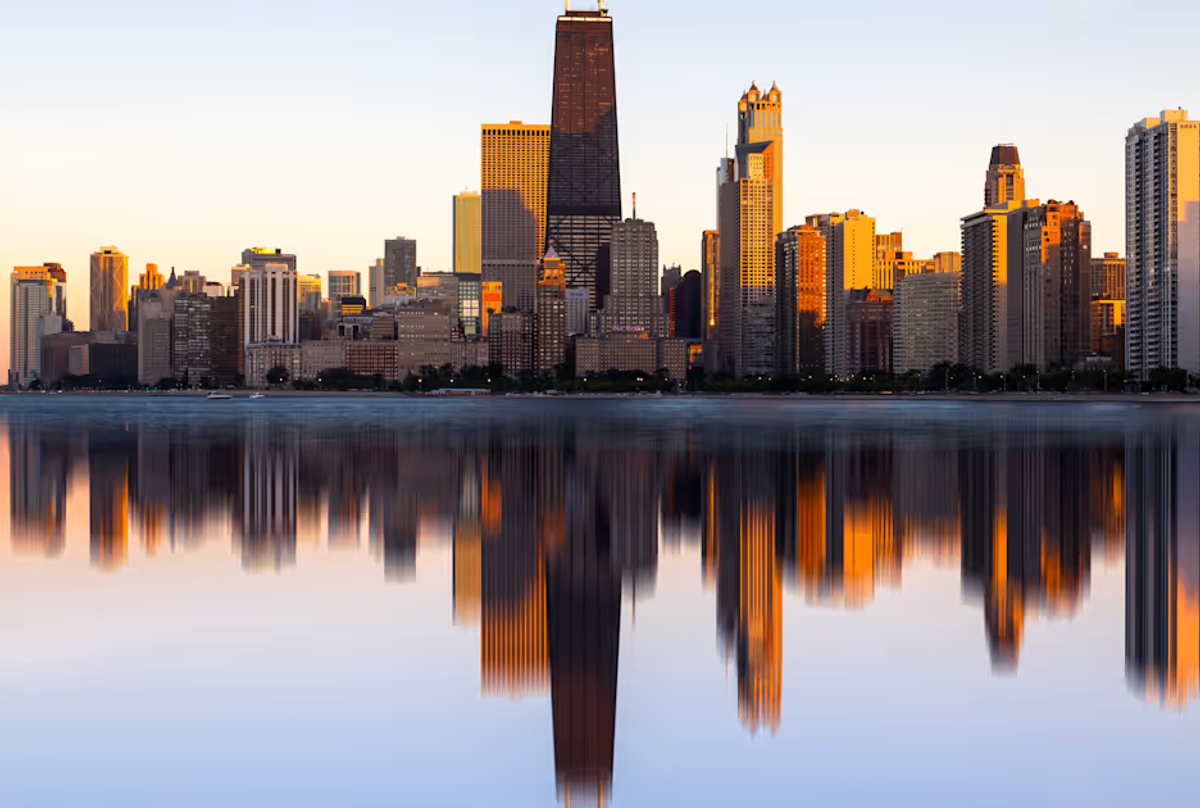Market Data

May 22, 2017
Richmond Manufacturing Survey Shows Optimism Waning
Written by Sandy Williams
The Fifth District Survey of Manufacturing Activity showed shipments and new orders fell significantly in May pulling the composite index down to 1 from 20 in April.
The index for backlogs decreased to -15 from 4 in April and vendor lead times increased to an index reading of 6 from 2. The finished goods inventory dropped points to 15 while the raw materials index slipped 7 points to a reading of 17.
Growth in prices paid and received moderated somewhat according to survey respondents.
Employee levels were relatively flat but wages increased slightly, moving the wage index from 21 to 23 for the month.
Survey respondents were generally optimistic when looking ahead to business conditions six months from now, although all components of the future index fell in May except for capital expenditures which increased from 26 to 34.
The Fifth District Survey of Manufacturing is conducted monthly by the Federal Reserve Bank of Richmond.







